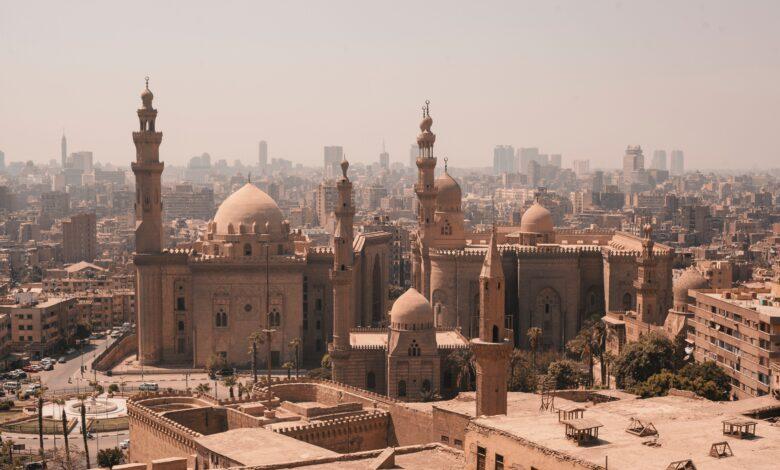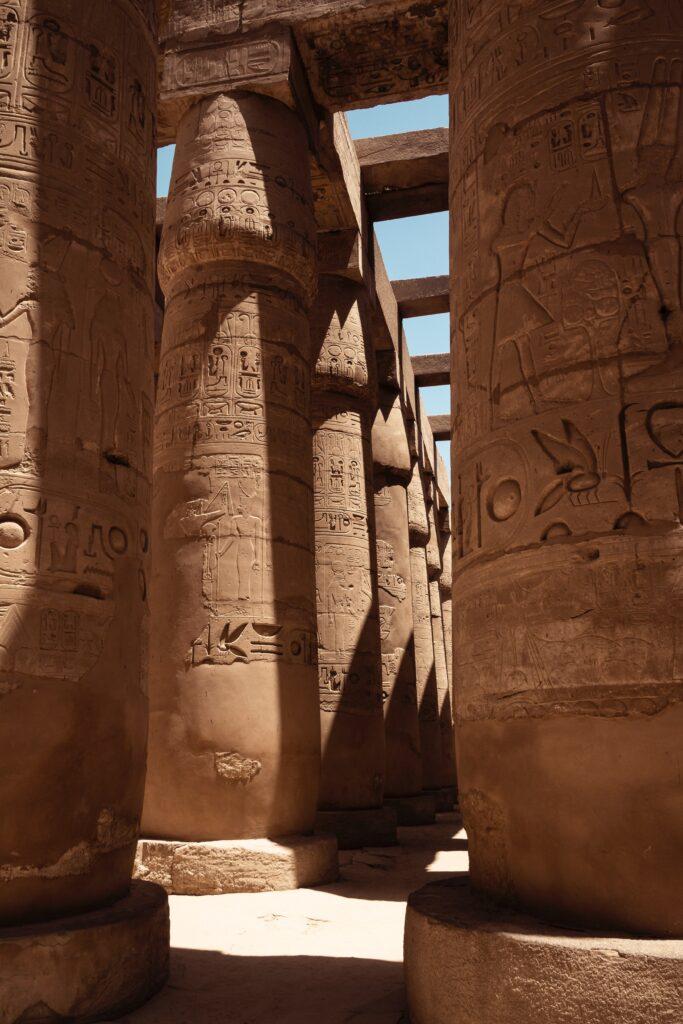🌄 Sunrise at Mount Sinai: A Spiritual Experience in Egypt 🇪🇬
Embark on a Journey of Tranquility and Reflection

Introduction
Nestled in the rugged landscapes of Egypt, Mount Sinai stands as a timeless symbol of spiritual significance. This sacred mountain, shrouded in biblical and Islamic history, beckons travelers from across the globe to embark on a pilgrimage that transcends the physical realm. Among the myriad of experiences that await, witnessing the sunrise at Mount Sinai is undoubtedly a pinnacle moment—a celestial spectacle that blends the earthly with the divine. In this blog post, we delve into the historical tapestry of Mount Sinai, unravel the spiritual threads that weave through its ascent, and explore the profound impact of greeting the dawn from its summit.
Historical and Spiritual Significance of Mount Sinai
Mount Sinai, also known as Mount Horeb, holds profound historical and spiritual significance, primarily due to its biblical connection. According to the Bible, it was on Mount Sinai that the prophet Moses received the Ten Commandments directly from God. This pivotal event, described in the Book of Exodus, is foundational to the Abrahamic religions—Judaism, Christianity, and Islam.
The ascent of Moses to the summit of Mount Sinai is symbolic of the divine encounter and the transmission of moral and ethical principles to guide human conduct. The location, shrouded in awe and mystery, serves as a tangible link to the divine, and its significance extends beyond religious boundaries, captivating the imagination of believers and scholars alike.
The Biblical Connection: Moses and the Ten Commandments
Mount Sinai’s biblical connection is most prominently highlighted in the story of Moses and the Ten Commandments. As narrated in Exodus 19 and 20, Moses ascended the mountain to converse with God, who inscribed the commandments on stone tablets. This sacred encounter not only shaped the moral framework of the Judeo-Christian tradition but also established Mount Sinai as a symbol of divine revelation and guidance.
The mountain, with its rugged terrain and isolated grandeur, becomes a metaphor for the arduous journey of faith and the pursuit of spiritual enlightenment. Its inclusion in the biblical narrative solidifies Mount Sinai’s place as a sacred site of paramount importance, attracting pilgrims and seekers from diverse backgrounds.
Mount Sinai in Islamic Tradition
In Islamic tradition, Mount Sinai is referred to as Jabal Musa, and its significance aligns with the Abrahamic narrative. While the Quran does not specifically mention Mount Sinai, Islamic tradition holds that it was a site of spiritual importance, and it is associated with the life of the Prophet Moses. The reverence for Moses and the recognition of the divine revelations make Mount Sinai a point of connection between the three major monotheistic religions.
The Islamic perspective further enriches the spiritual tapestry of Mount Sinai, emphasizing the unity of prophetic messages across different faiths. Pilgrims and scholars from the Islamic tradition also visit the site, contributing to its cross-cultural significance.
Mount Sinai as a Pilgrimage Site
Beyond its historical and religious dimensions, Mount Sinai has become a pilgrimage site for believers seeking a deeper connection with their faith. Pilgrims embark on the challenging journey to reach the summit, mirroring the perseverance required in the pursuit of spiritual enlightenment. The panoramic views from the top serve as a breathtaking backdrop for contemplation and prayer, creating a unique pilgrimage experience.
As pilgrims ascend Mount Sinai, they not only follow in the footsteps of Moses but also engage in a personal and communal exploration of faith. The mountain’s allure as a pilgrimage site persists, drawing individuals from diverse backgrounds to share in the spiritual legacy embedded in its rocky slopes. The pilgrimage to Mount Sinai transcends religious boundaries, fostering a sense of unity among those who seek inspiration and transcendence in this sacred space.
Preparing for the Journey
Embarking on a pilgrimage to Mount Sinai requires meticulous preparation to ensure a meaningful and fulfilling experience. Travel logistics play a crucial role in facilitating a smooth journey to this sacred site. Pilgrims typically arrive in the nearby town of Saint Catherine, located in the Sinai Peninsula, and from there, transportation options include buses, taxis, or organized tours to reach the base of the mountain.
It’s advisable for pilgrims to research and plan their itinerary in advance, considering factors such as accommodation, local regulations, and available amenities. Additionally, a physical fitness assessment is recommended, as the ascent of Mount Sinai involves a trek with varying degrees of difficulty. Adequate preparation ensures that pilgrims can focus on the spiritual aspects of the journey without being encumbered by logistical challenges.
Travel Logistics to Reach Mount Sinai
Reaching Mount Sinai involves navigating the rugged terrain of the Sinai Peninsula. Pilgrims can opt for guided tours, which often include transportation, accommodation, and the assistance of experienced guides familiar with the local conditions. Alternatively, independent travelers can arrange transportation to the trailhead and explore the ascent at their own pace.
Understanding the travel logistics, including transportation options, entry fees, and any necessary permits, contributes to a seamless pilgrimage experience. Pilgrims should also be mindful of the local customs and regulations to respect the sanctity of the site and the communities residing in the vicinity.
Recommended Time and Season for the Sunrise Experience
One of the most awe-inspiring aspects of the Mount Sinai pilgrimage is witnessing the sunrise from its summit. Timing is crucial for this breathtaking experience. The ascent typically begins in the late evening, allowing pilgrims to reach the summit in time for the dawn spectacle. The stillness of the night, coupled with the anticipation of the sunrise, creates a unique atmosphere of spiritual reflection.
While Mount Sinai can be ascended throughout the year, the recommended seasons for the sunrise experience are spring and autumn when the weather is milder. Summer temperatures can be intense, and winter nights may be chilly, affecting the overall pilgrimage experience. Planning the journey during optimal weather conditions enhances the chances of a memorable and comfortable ascent.
Importance of Mental and Spiritual Preparedness
Beyond physical preparation, mental and spiritual readiness is paramount for a pilgrimage to Mount Sinai. The ascent is not merely a physical challenge but a journey of the soul. Pilgrims are encouraged to cultivate a mindset of reverence and introspection, fostering a connection with the sacred history of the site.
Engaging in spiritual practices, such as prayer and meditation, before and during the pilgrimage, helps align the mind with the purpose of the journey. Additionally, embracing the communal spirit of the pilgrimage fosters a sense of unity among fellow travelers, creating a supportive environment for the shared spiritual endeavor. Mental and spiritual preparedness transforms the ascent of Mount Sinai into a profound and transformative experience, transcending the physical challenges of the journey.
The Ascent: A Pilgrimage to the Summit
Embarking on the ascent of Mount Sinai is a spiritual journey that weaves through rugged landscapes and sacred sites, offering pilgrims a profound experience of both physical and metaphysical elevation. The trek up Mount Sinai is a testament to perseverance and faith, providing a unique opportunity for introspection and communion with the divine.
Description of the Trek Up Mount Sinai
The ascent begins at the base of the mountain, usually in the late evening, to culminate in the awe-inspiring sunrise at the summit. The trail winds its way through rocky paths and uneven terrain, illuminated only by the soft glow of moonlight and the occasional flicker of stars overhead. Pilgrims navigate the serpentine route, guided by the anticipation of reaching the pinnacle where Moses received the divine commandments.
As the altitude increases, the air becomes crisp, and the surroundings transform into a silent, contemplative expanse. The physical exertion becomes a metaphorical pilgrimage, symbolizing the challenges encountered on the spiritual path. Each step is a deliberate journey towards a higher state of consciousness, mirroring the ascent of the soul toward enlightenment.
Highlights Along the Way: St. Catherine’s Monastery, the Chapel of the Holy Trinity
En route to the summit, pilgrims encounter significant landmarks that add layers of spiritual meaning to the journey. St. Catherine’s Monastery, situated at the foot of Mount Sinai, is a centuries-old repository of religious artifacts and manuscripts. Pilgrims often pause to absorb the spiritual energy of this ancient site, feeling a connection to the monks who have maintained a continuous presence in this sacred space.
Further along the ascent, the Chapel of the Holy Trinity provides a moment of respite and reflection. This small chapel, nestled amidst the rocks, is a place of communal worship and a reminder of the enduring sacredness of Mount Sinai. Pilgrims gather to offer prayers and share a sense of camaraderie before continuing their upward journey.
Personal Anecdotes and Reflections During the Ascent
The ascent of Mount Sinai is not merely a physical undertaking but a deeply personal and introspective experience. Pilgrims often share anecdotes of the challenges faced, the moments of doubt, and the profound insights gained along the way. As the night unfolds, a collective energy emerges among the pilgrims, fostering a sense of unity and shared purpose.
Personal reflections during the ascent range from the exhaustion of the body to the invigoration of the spirit. The panoramic views, the sounds of the night, and the collective heartbeat of fellow pilgrims create a tapestry of memories that linger long after reaching the summit. Each step becomes a prayer, and each pause a moment of communion with the sacred, making the ascent of Mount Sinai a transformative pilgrimage of the heart and soul.
Awaiting the Sunrise
Reaching the summit of Mount Sinai is a climactic moment in the pilgrimage, and as pilgrims stand at the pinnacle, there is an undeniable sense of anticipation for the imminent sunrise. Awaiting the sunrise becomes a sacred pause, a moment where time seems suspended, and the convergence of earth and sky sets the stage for a spiritual revelation.
Arriving at the Summit
Upon reaching the summit, pilgrims are greeted by a breathtaking panorama. The physical exertion of the ascent gives way to a profound stillness that envelops the mountaintop. Pilgrims often find a quiet spot to sit or stand, reflecting on the journey that brought them to this sacred height. The summit becomes a symbolic threshold between the earthly and the divine, where the air is charged with reverence and expectation.
Setting the Scene: The Quietude, the Stars Fading, Anticipation
As the night slowly gives way to dawn, a transformative hush descends upon the summit. The quietude becomes palpable, accentuated by the fading glow of stars overhead. The celestial canopy, which bore witness to the arduous ascent, gracefully yields to the impending brilliance of the sun. In this pre-dawn stillness, pilgrims share in a collective anticipation, united by the common purpose of witnessing the sunrise from this sacred vantage point.
The fading stars serve as a metaphorical prelude to the spiritual awakening that awaits with the rising sun. The mountaintop, bathed in the soft hues of dawn, becomes a threshold between darkness and light, mirroring the internal journey of each pilgrim as they await the unveiling of a new day.
The Spiritual Ambiance
The summit of Mount Sinai exudes a spiritual ambiance that transcends the physical surroundings. Pilgrims, wrapped in blankets or huddled together for warmth, engage in moments of silent introspection and communal prayer. The energy of the place is palpable, with a shared sense of reverence and humility prevailing among those present.
The spiritual ambiance is heightened by the awareness of standing on a site revered across religious traditions. Whether one comes from a Judeo-Christian, Islamic, or diverse spiritual background, the summit becomes a meeting point for the universal human quest for transcendence. It is a space where the boundaries between faiths dissolve, and a shared reverence for the divine connects the hearts of those gathered.
As the first rays of the sun emerge on the horizon, the spiritual ambiance crescendos, reaching a zenith of collective awe. The awaited sunrise becomes a manifestation of the sacred, an ethereal spectacle that leaves an indelible mark on the souls of pilgrims who have traversed the night to welcome the light of a new day.

The Mesmerizing Sunrise
As pilgrims stand at the summit of Mount Sinai, the much-anticipated sunrise unfolds in a symphony of colors that transforms the sky into a canvas of ethereal beauty. The sheer magnificence of the sunrise is a sensory feast, captivating the eyes and stirring the soul. It is a moment that transcends the physical realm, inviting pilgrims to witness the divine artistry at play.
Vivid Description of the Sunrise
The first light emerges on the horizon, casting a gentle glow that gradually intensifies, chasing away the remnants of the night. The transition from darkness to light is gradual, allowing pilgrims to savor every nuance of the unfolding spectacle. The sky, initially tinged with hues of indigo and violet, begins to blush with shades of pink and orange as the sun makes its ascent.
The landscape, bathed in the soft glow of dawn, reveals its contours in a play of shadows and highlights. The rugged silhouette of Mount Sinai itself takes on a surreal quality, its slopes and valleys becoming a textured tapestry under the ever-changing sky. The vivid hues of the sunrise paint a breathtaking tableau, and the sheer beauty of the moment becomes a testament to the divine artistry inherent in the natural world.
The Play of Colors and the Magical Moment
As the sun inches above the horizon, the sky transforms into a kaleidoscope of colors. The transition from cool blues to warm reds and golds is a visual feast, and the surrounding landscape is bathed in a warm, golden glow. The play of colors intensifies, creating a magical ambiance that envelops the mountaintop in a transcendent aura.
Pilgrims, huddled together in collective reverence, watch in awe as the sun completes its ascent, casting its benevolent light upon the sacred landscape. The interplay of colors becomes a metaphor for the spiritual journey, symbolizing the emergence from darkness into the illumination of divine truth. It is a moment that transcends the ordinary, inviting pilgrims to witness the extraordinary dance of light and color that heralds the birth of a new day.
Reflection on the Spiritual Impact
The mesmerizing sunrise atop Mount Sinai extends beyond its visual splendor, leaving a profound spiritual impact on those who bear witness. The experience becomes a metaphorical journey from the shadows of doubt and uncertainty to the clarity of spiritual enlightenment. The symbolism of light conquering darkness resonates deeply, echoing the universal theme of spiritual awakening and renewal.
Pilgrims often find themselves moved by the sheer majesty of the sunrise, contemplating the interconnectedness of nature, faith, and the human spirit. The spiritual impact is visceral, an internal transformation that lingers long after the sun has climbed the sky. The mesmerizing sunrise on Mount Sinai becomes a timeless memory, etched in the hearts of pilgrims as a symbol of hope, renewal, and the enduring beauty of the divine.
Contemplation and Meditation
At the summit of Mount Sinai, amidst the serene atmosphere and the lingering magic of the sunrise, pilgrims find a natural haven for contemplation and meditation. The tranquil setting provides a unique opportunity for individuals to turn inward, away from the distractions of daily life, and engage in a deep exploration of their thoughts and emotions. Contemplation on the mountaintop becomes a sacred act, fostering introspection and offering a quiet space for personal reflection.
Utilizing the Serenity for Personal Reflection
The profound serenity enveloping Mount Sinai creates an ideal environment for personal reflection. Pilgrims often find secluded spots on the summit to sit or stand in silent contemplation. The stillness of the surroundings, broken only by the soft whispers of the wind, allows individuals to delve into their inner selves, pondering life’s mysteries and seeking clarity on their spiritual journey. The solitude becomes a companion in this sacred act of self-discovery.
Pilgrims may choose to bring journals or engage in mental reflections, allowing the majestic backdrop of Mount Sinai to inspire and guide their thoughts. The mountaintop becomes a sanctuary where the external world fades away, leaving space for inner dialogue and connection with the sacred energies that permeate the site.
The Profound Connection with Nature and Spirituality
Mount Sinai’s summit is not merely a physical vantage point but a bridge between nature and spirituality. Pilgrims often express a profound sense of connection with the natural world, feeling the earth beneath their feet and the wind against their faces as integral components of their spiritual experience. The rugged landscape, the expansive sky, and the panoramic views contribute to a holistic communion with both the physical and metaphysical realms.
This deep connection with nature amplifies the spiritual impact of the pilgrimage. The awareness of standing on ancient ground, where prophets once communed with the divine, adds layers of significance to the contemplative moments. The union of nature and spirituality becomes a source of inspiration, reinforcing the interconnectedness of all things and fostering a renewed sense of purpose and belonging.
Insights Gained During Moments of Quiet Contemplation
In the quietude of Mount Sinai, insights unfold like petals, revealing the inner wisdom that often eludes the hustle of everyday life. Pilgrims report gaining profound insights into their personal journeys, relationships, and the broader tapestry of existence. The mountaintop becomes a space where the boundaries between the self and the divine blur, allowing for a heightened awareness of one’s purpose and place in the world.
These insights often extend beyond the individual, fostering a sense of collective consciousness among pilgrims. Shared moments of contemplation create a subtle yet powerful bond, transcending language and cultural differences. The pilgrimage to Mount Sinai becomes not just a physical ascent but a collective journey of the spirit, where insights gained in moments of quiet contemplation ripple through the hearts of all who stand on the sacred summit.
Descending: Carrying the Experience
The descent from the summit of Mount Sinai is more than a physical return to lower elevations; it symbolizes the integration of the profound experience gained during the pilgrimage. As pilgrims descend, they carry with them the spiritual insights, moments of contemplation, and the radiant energy of the sunrise. The journey down becomes a continuation of the pilgrimage, allowing individuals to internalize and carry the transformative experience into their everyday lives.
The Journey Down and Its Significance
Descending from Mount Sinai is a deliberate process, requiring careful navigation of the rugged terrain. The physical descent mirrors the gradual return to the ordinary world, but the spiritual descent is a deliberate choice to infuse daily life with the lessons learned on the mountaintop. Pilgrims often find the journey down to be a time of reflection, as they revisit the insights gained and mentally prepare to re-enter the world below.
The descent is a reminder that the spiritual journey is not confined to sacred spaces; rather, it is an ongoing process that permeates every step of life’s path. Each downward step becomes a commitment to carry the light of the experience back into the world and share its warmth with others.
The Lasting Impact on the Spiritual Mindset
The lasting impact of the Mount Sinai pilgrimage extends far beyond the moments spent on the summit. The spiritual mindset cultivated during the ascent and the sunrise lingers in the hearts and minds of pilgrims. The rugged landscapes, the communal prayers, and the introspective moments shape a new perspective that endures long after the descent is complete.
Pilgrims often find that the spiritual mindset gained on Mount Sinai influences their daily choices, relationships, and overall outlook on life. The sense of interconnectedness, the reverence for the divine, and the recognition of the sacred in the ordinary contribute to a lasting transformation. The pilgrimage becomes a catalyst for spiritual growth, infusing a sense of purpose and mindfulness into the fabric of everyday existence.
Encouraging Others to Embark on a Similar Journey
As pilgrims descend from Mount Sinai, the desire to share the transformative experience with others becomes a natural inclination. The encouragement to embark on a similar journey emanates from a genuine belief in the power of pilgrimage to inspire, heal, and elevate the human spirit. Pilgrims often become ambassadors of the sacred mountain, sharing their stories and insights to motivate others to undertake the ascent.
The encouragement is not merely an invitation to climb a physical mountain but an urging to embark on personal journeys of self-discovery and spiritual exploration. By sharing the impact of the Mount Sinai pilgrimage, individuals hope to ignite the spark of curiosity and inspiration in others, fostering a ripple effect of spiritual awakening and collective consciousness.
Descending from Mount Sinai is not an end but a continuation of the pilgrimage’s influence. As pilgrims carry the experience with them, the descent becomes a sacred transition, marking the beginning of a new chapter enriched by the transformative power of the journey to the summit.
FAQs
Q. How can I reach Mount Sinai?
A. Embarking on this spiritual journey requires planning. Discover the best routes and logistics to reach Mount Sinai for the sunrise experience.
Q. Is there a specific time to witness the sunrise?
A. Timing is crucial. Learn about the optimal time to witness the majestic sunrise and make the most of your spiritual encounter.
Q. What should I bring for the experience?
A. Prepare adequately for the journey. Uncover the essentials you need to carry for a comfortable and enriching Sunrise at Mount Sinai.
Q. Can I capture the moment?
A. Photography tips and guidelines to help you capture the ethereal beauty of the sunrise responsibly and artistically.
Q. Are there any rituals associated with the sunrise?
A. Delve into the spiritual customs and rituals that accompany the sunrise experience at Mount Sinai, adding depth to your encounter.
Q. Is it suitable for all ages?
A. Learn about the accessibility of the sunrise location and any considerations for various age groups, ensuring a safe and enjoyable experience for everyone.
Conclusion
In the quiet descent from Mount Sinai, one carries not only the memory of a sunrise but a spiritual revelation. The timeless allure of this sacred peak endures, inviting all seekers to embrace the transformative magic of a sunrise—a celestial dance that transcends time, culture, and creed. As we conclude this exploration, may the echoes of Mount Sinai inspire a collective pilgrimage towards the celestial within each of us, beckoning us to find our own summit of spiritual awakening.
UP NEXT
https://touristeyes.com/%f0%9f%8f%9b%ef%b8%8f-the-enigmatic-temples-of-bagan-myanmar-%f0%9f%87%b2%f0%9f%87%b2/





Facebook Comments